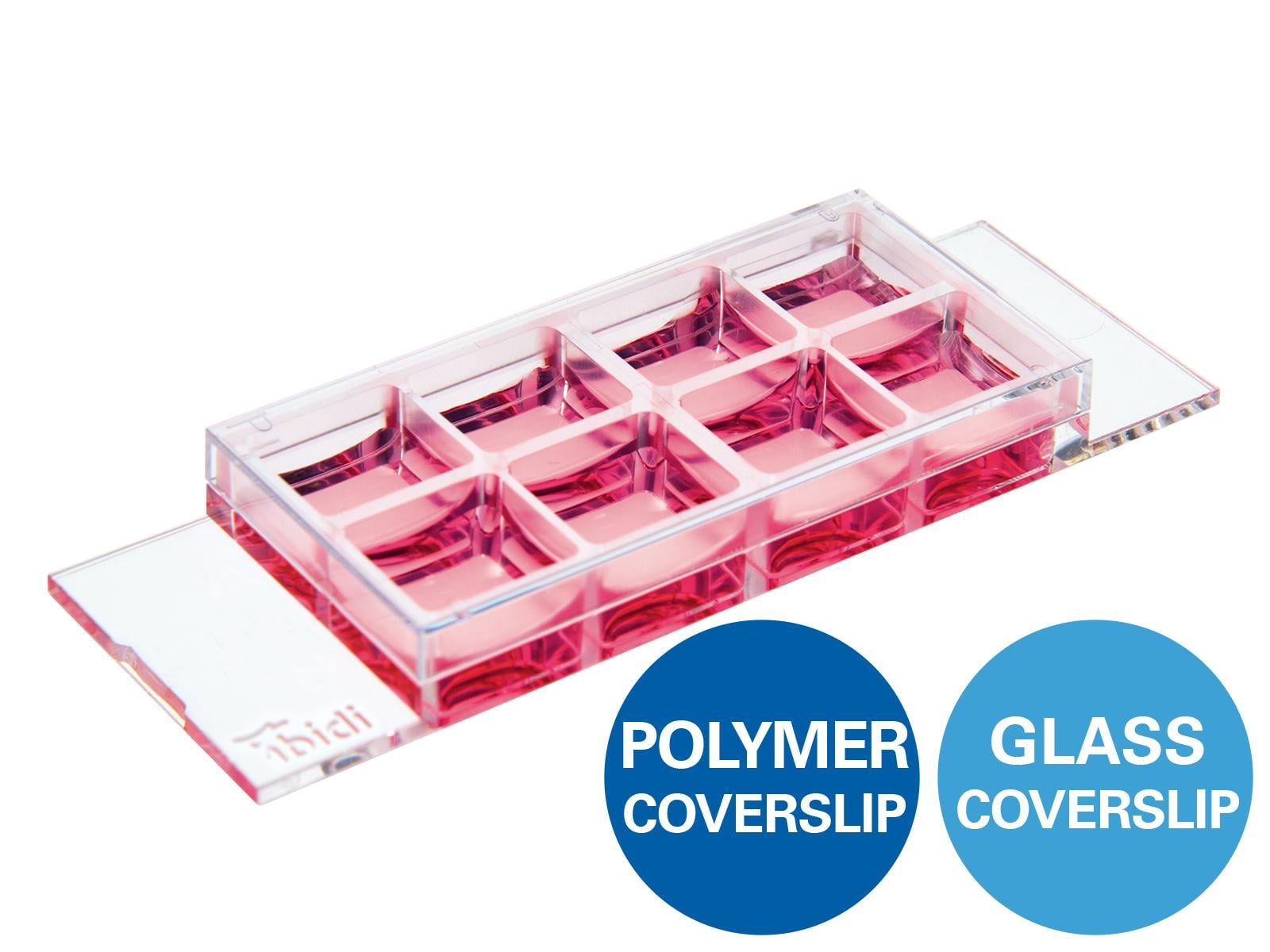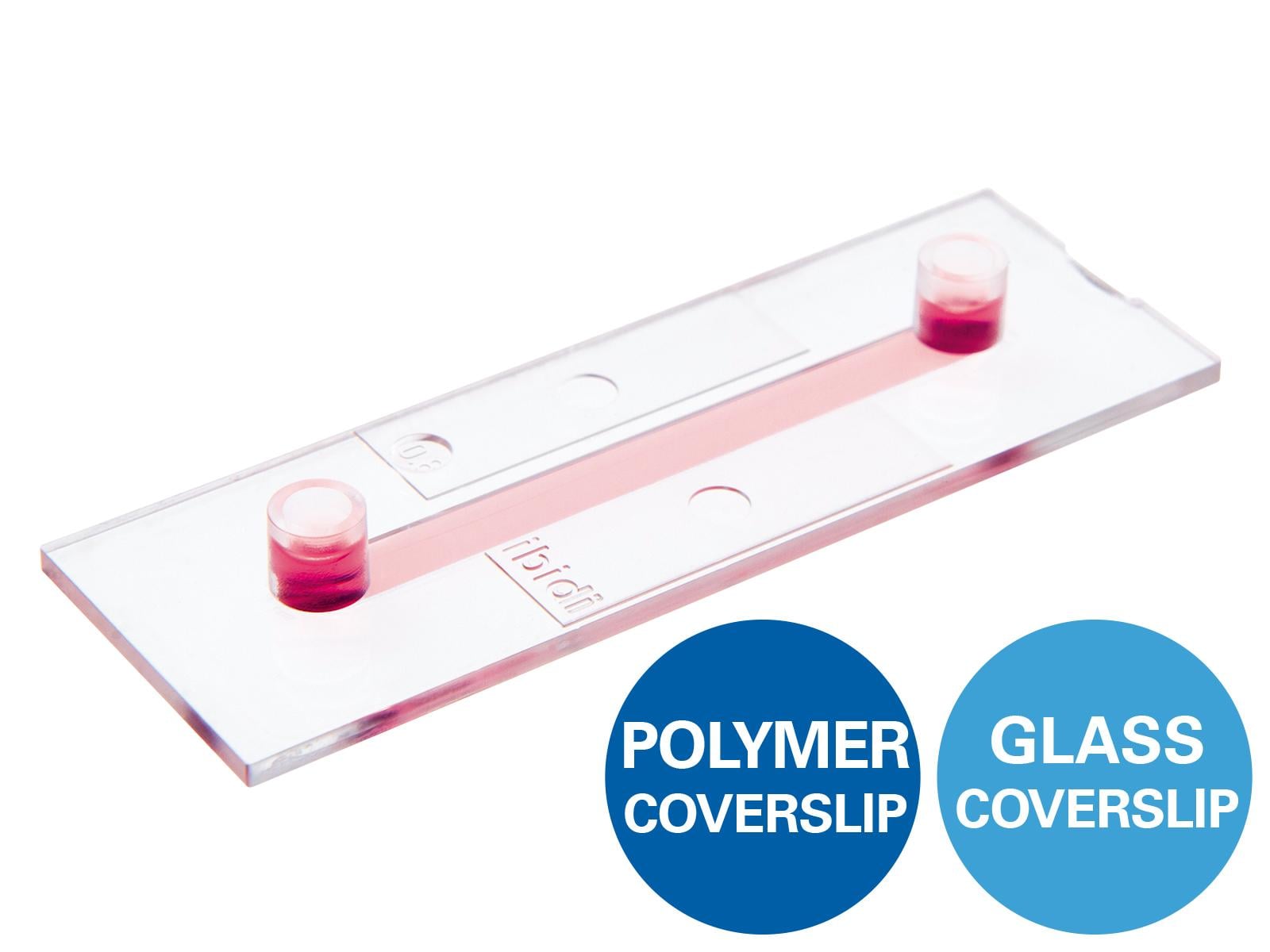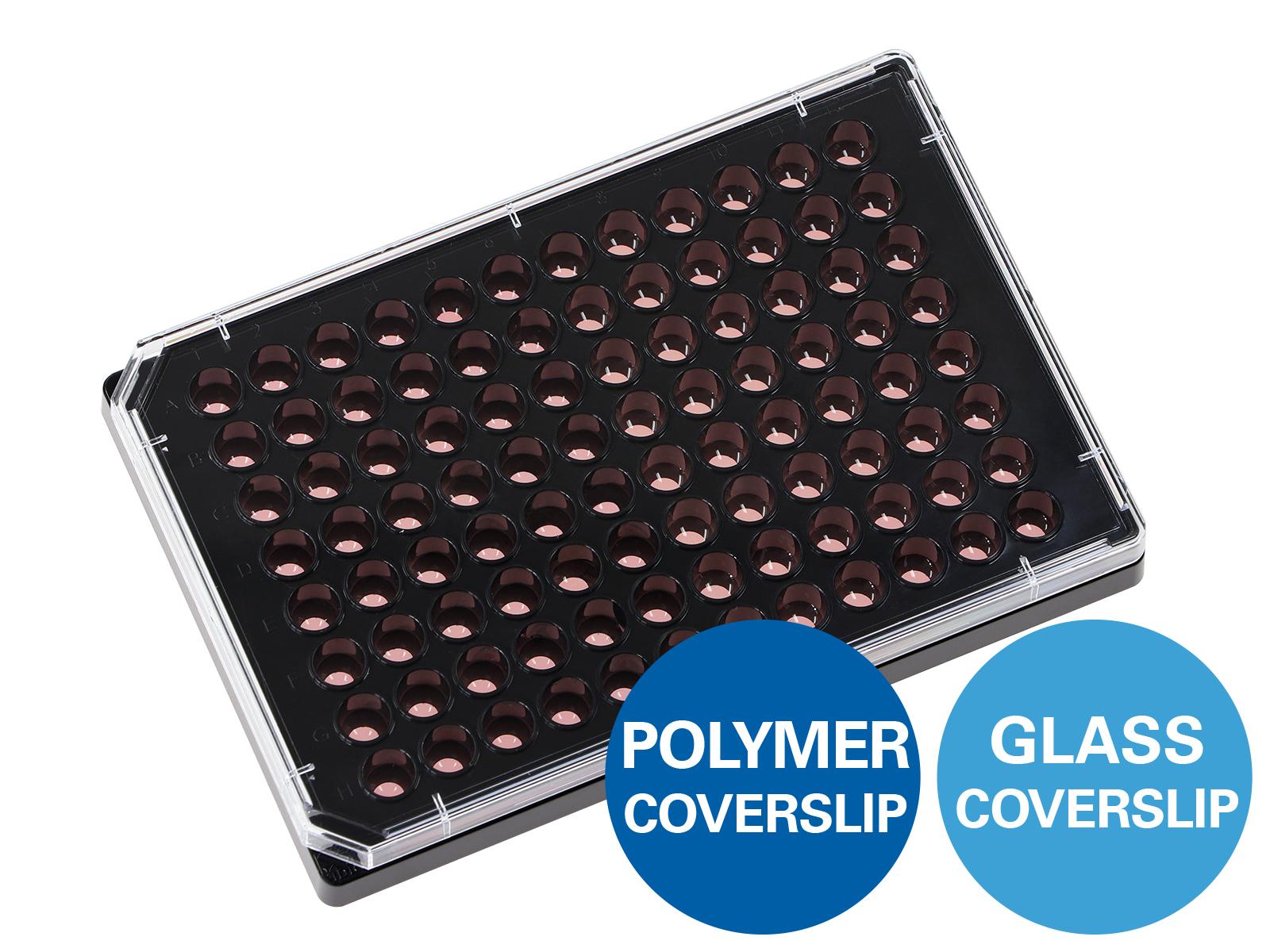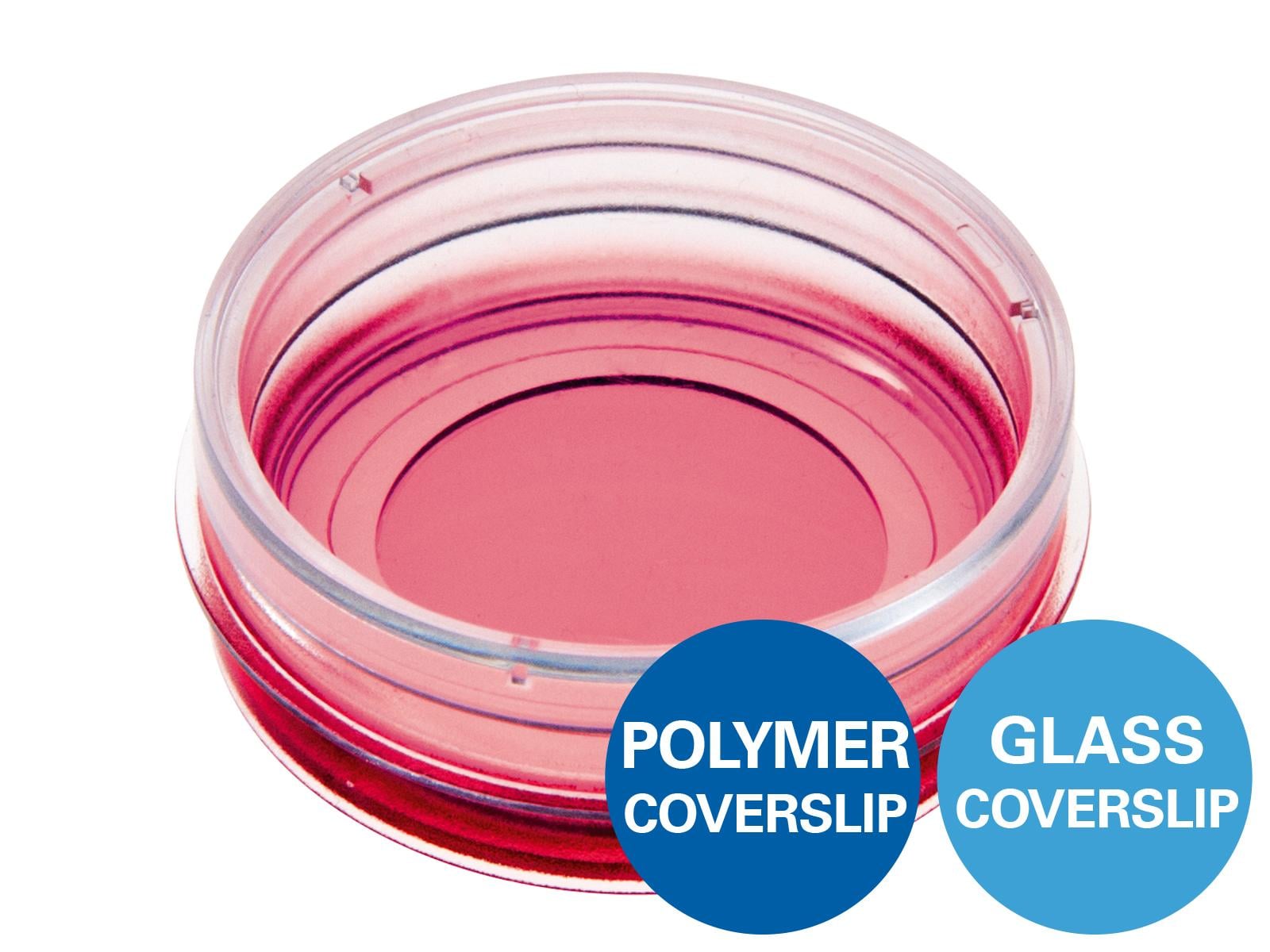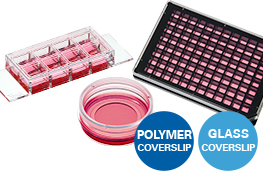Inverted and Upright Microscopy:
What Is the Difference?
Microscopy is an essential tool in biological research, and choosing the right setup—inverted or upright—is critical for obtaining optimal imaging results. Both setups are distinguished primarily by the position of the objective lens relative to the sample. This difference determines the type of samples that can be imaged, the sterility of the environment, and compatibility with live cell or fixed-sample protocols.
Inverted Microscopy Setup
|  |
ibidi Solutions for Inverted Microscopes
- μ-Slides, μ-Dishes, and μ-Plates: Incorporate a thin coverslip bottom—either a #1.5 Polymer Coverslip or a #1.5H Glass Coverslip
- ibidi Stage Top Incubators: Maintain physiological conditions during imaging
Upright Microscopy Setup
 |
|
Upright-Compatible ibidi Labware
- 3 | 8 | 12 Well Chamber Slides, removable: Silicone chamber on top of a microscopy slide can be removed after cultivation and staining for coverslip mounting
- μ-Slide VI – Flat: Designed for both upright and inverted microscopes without compromising optical integrity
What Is the Principle of Inverted Microscopy?
In an inverted microscope, the objective is positioned below the stage, pointing upward. For a transmitted light path, the light source and condenser are positioned above the stage, directing light downward.
The specimen is observed through the bottom of the culture vessel. For optimal imaging, the vessel bottom must match the objective’s specifications and meet the highest optical standards, as provided by the #1.5 Polymer Coverslip and the #1.5H Glass Coverslip
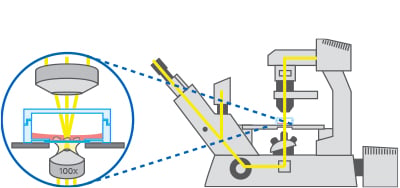
Schematic of an inverted microscope. Note the thin vessel bottom, through which the cells are observed.
When to Use an Inverted Setup?
Inverted microscopy is the preferred configuration for a wide range of live cell imaging applications as well as for imaging fixed and stained samples. Especially for live cell imaging, this setup offers distinct advantages in maintaining physiological conditions, ensuring sample integrity, and enabling precise experimental manipulation. It is especially valuable in cell biology, pharmacology, and tissue engineering, where high-resolution imaging over extended periods is essential.
Key benefits of using an inverted microscope include:
- Optimal focal plane – Adherent cells naturally settle and spread along the vessel bottom, aligning within a single focal plane for consistent imaging.
- Cell culture conditions – Inverted setups allow for larger medium volumes above the cells, improving nutrient availability and supporting long-term viability.
- Accessibility from the top – Allows medium exchange, drug application, or micropipette manipulation during imaging.
- Maintained sterility – The objective remains below the coverslip bottom, avoiding direct contact with the sample and thereby minimizing contamination risk.
- Seamless integration with incubation systems – Supports maintenance of physiological conditions during long-term live cell imaging.
ibidi Solutions for Inverted MicroscopesThe ibidi µ-labware features thin, optically precise coverslip bottoms designed for high-resolution imaging:
To maintain in vivo-like conditions, ibidi Stage Top Incubators are compatible with any inverted microscope equipped with a multiwell plate holder or frame. They precisely control temperature, humidity, CO₂, and O₂ to enable extended time-lapse imaging without compromising cell health or image quality. |
|
What Is the Principle of Upright Microscopy?
In an upright microscope, the objective is positioned above the stage, pointing downward toward the specimen. For a transmitted light path, the light source and condenser are positioned beneath the stage, directing light upward. The sample is typically viewed from above, either through the lid of a petri dish, directly onto a coverslip, or—when using dipping objectives—immersed in a matching medium without a coverslip.
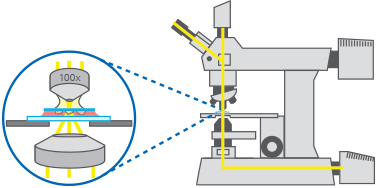
Schematic of an upright microscope. Note that the cells are squeezed between the slide and a coverslip.
When to Use Upright Microscopes
In cell biology, upright microscopes are primarily used for low-resolution phase contrast microscopy. While they can be adapted for high-resolution live cell imaging—particularly with dipping objectives—this setup is less common for cell culture applications due to the increased contamination risk and limited compatibility with incubation systems. As a result, upright configurations are more commonly used for fixed cells, tissue sections, and larger specimens, including intact tissues and in vivo imaging in small animals, often in conjunction with advanced techniques such as multiphoton microscopy.
ibidi Solutions for Upright MicroscopesWhile ibidi primarily designs labware for inverted microscopy, several products are fully compatible with upright systems:
|

